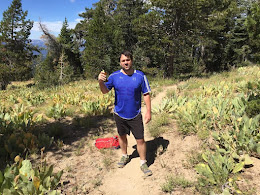A lot of people have become quite nervous about this El Niño. 2014-15 started off strong with a soaking December, and then on New Years last year it just died. I was starting to worry that this "strongest El Niño ever" had suffered the same fate, with clear 80 degree days and the related return of nasty winter weather to the rest of the country. And with a warm and dry first 2.5 weeks of February, it'll take more than a these couple spritzes to convince us that this El Niño is not dying.
Lake Folsom had just attained historical average level at the beginning of the month, but it's the only one in the state that has. On the fifth of February, the state's reservoirs all combined (at least what the state tracks publicly) were at 58% of historical average. So I went back to the state's reservoir status page today to see if we're falling behind again. It turns out that Folsom is now even further ahead, at 117% of historical average, and the reservoir system as a whole is at 60.5%, a bit further ahead than before.

Lake Shasta, our biggest reservoir, for the 2016 water year. Thick blue line is the current year, other lines are other wet or dry years for comparison. Black box is the rainless period. As you can see even during this rainless period it was still catching up to average (the top of the light blue shaded area), but still has a long way to go. From water.ca.gov.
While this is a relief, it seems strange. How can we still be catching up if it's not raining? Let's assume that Sacramento's rainfall is representative of the state as a whole (which it may not be). Right at the end of the period 2/5-2/17 (the dry period between when I last checked, and the most recent data) Sac got 0.47" of rain (this storm). Normally Sac gets 4.25" of rain in the month of February. Since I don't have access to daily rain averages for the calendar year, I'll assume that the rate of rain is equal across February. Therefore, an average of 4.25" of rain during an average February of 28.25 days gives us 1.8" of rain in the period 2/5-2/17, if this period had conformed to average rainfall. But we didn't get 1.8", we got 0.47", which is only 26% of what we should have received.
So despite getting only 26% of the average rain, our reservoirs continued catching up, getting 2.5% closer to historical averages as mentioned above.
To my amateur water-resource-planning way of thinking, it seems that the explanation must be some combination of
a) my assumptions are wrong, and many other parts of the state have continued getting above average precipitation;
b) they're minimizing release - i.e., not releasing much water from the reservoirs relative to normal years so the flow into the reservoirs is lower than average, but the flow out is even lower than that;
c) delayed effect - rain doesn't immediately teleport downhill (and snow doesn't melt right away) and it takes a while for the drainage basins to empty into the reservoirs; or
d) the state's numbers are wrong.
If you are a meteorologist, civil engineer, or other professional type who knows about this stuff and knows the answer, I'd love to hear from you!
In the meantime, here's hoping for a wet spring, and that people conserving. We're still not even at 2/3 normal for this time of year. Mark Twain observed that everyone complains about the weather but no one does anything about it; if he were living in California 150 years later, I hope he would see us proving him wrong.





